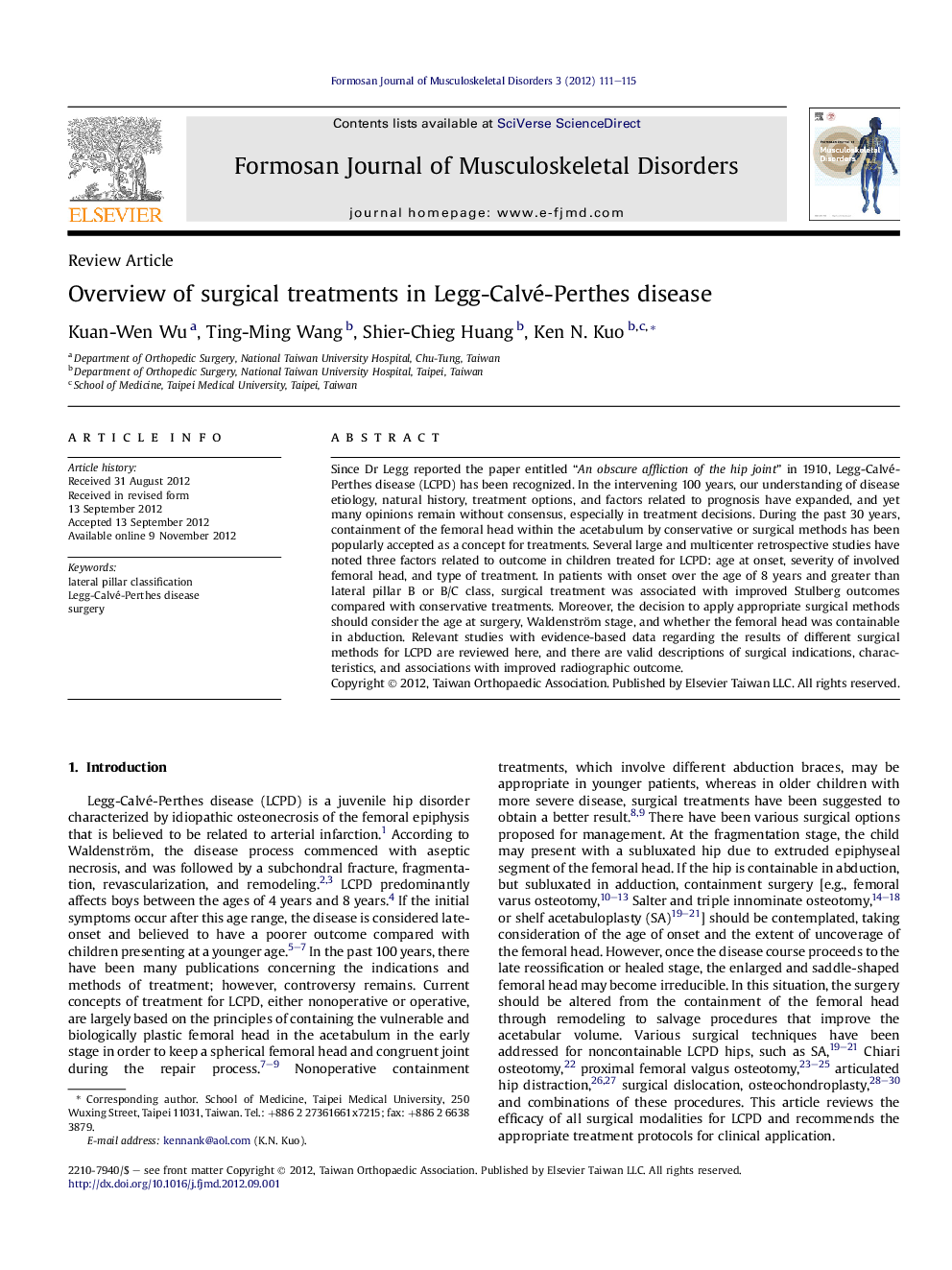| Article ID | Journal | Published Year | Pages | File Type |
|---|---|---|---|---|
| 4055364 | Formosan Journal of Musculoskeletal Disorders | 2012 | 5 Pages |
Abstract
Since Dr Legg reported the paper entitled “An obscure affliction of the hip joint” in 1910, Legg-Calvé-Perthes disease (LCPD) has been recognized. In the intervening 100 years, our understanding of disease etiology, natural history, treatment options, and factors related to prognosis have expanded, and yet many opinions remain without consensus, especially in treatment decisions. During the past 30 years, containment of the femoral head within the acetabulum by conservative or surgical methods has been popularly accepted as a concept for treatments. Several large and multicenter retrospective studies have noted three factors related to outcome in children treated for LCPD: age at onset, severity of involved femoral head, and type of treatment. In patients with onset over the age of 8 years and greater than lateral pillar B or B/C class, surgical treatment was associated with improved Stulberg outcomes compared with conservative treatments. Moreover, the decision to apply appropriate surgical methods should consider the age at surgery, Waldenström stage, and whether the femoral head was containable in abduction. Relevant studies with evidence-based data regarding the results of different surgical methods for LCPD are reviewed here, and there are valid descriptions of surgical indications, characteristics, and associations with improved radiographic outcome.
Keywords
Related Topics
Health Sciences
Medicine and Dentistry
Orthopedics, Sports Medicine and Rehabilitation
Authors
Kuan-Wen Wu, Ting-Ming Wang, Shier-Chieg Huang, Ken N. Kuo,
